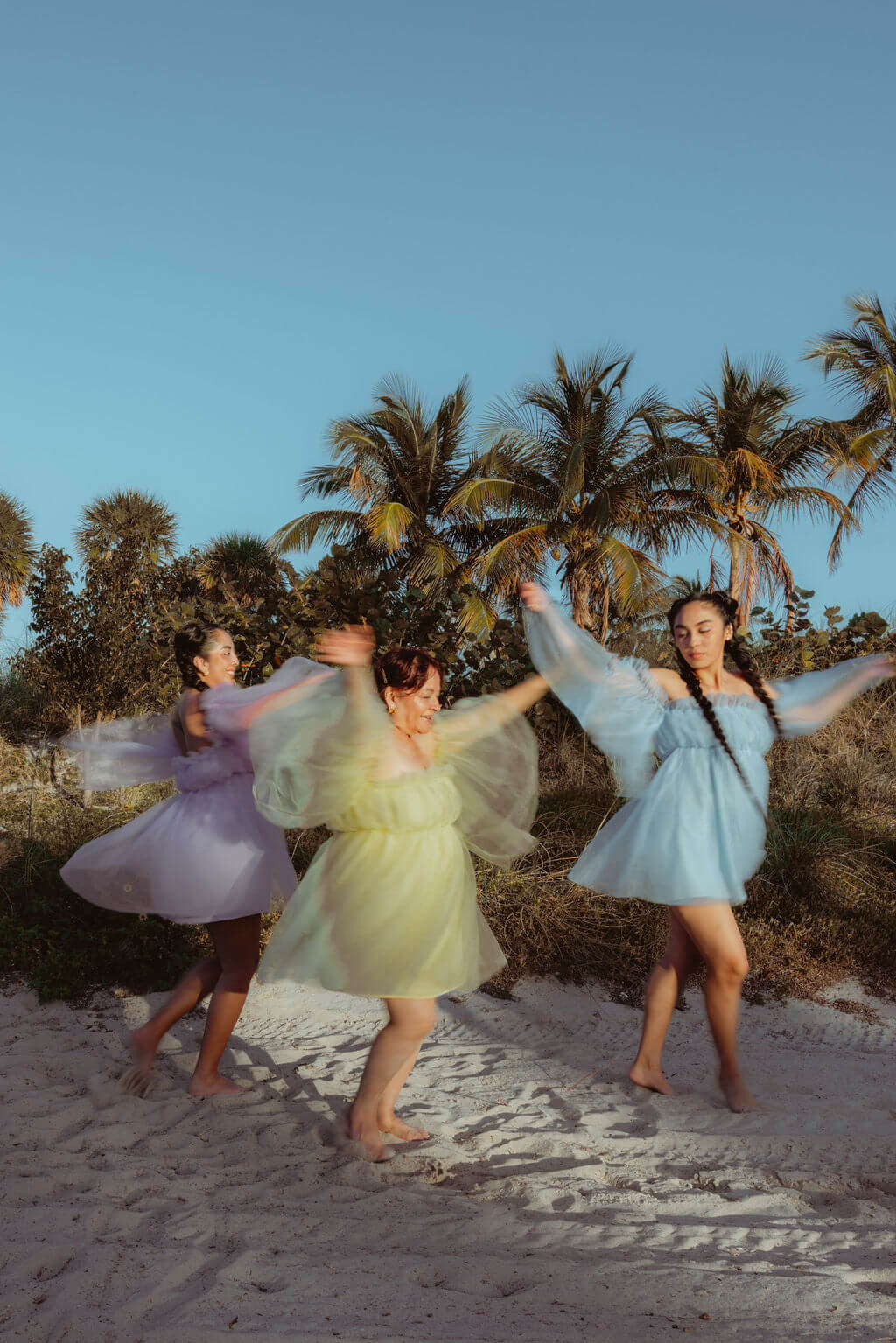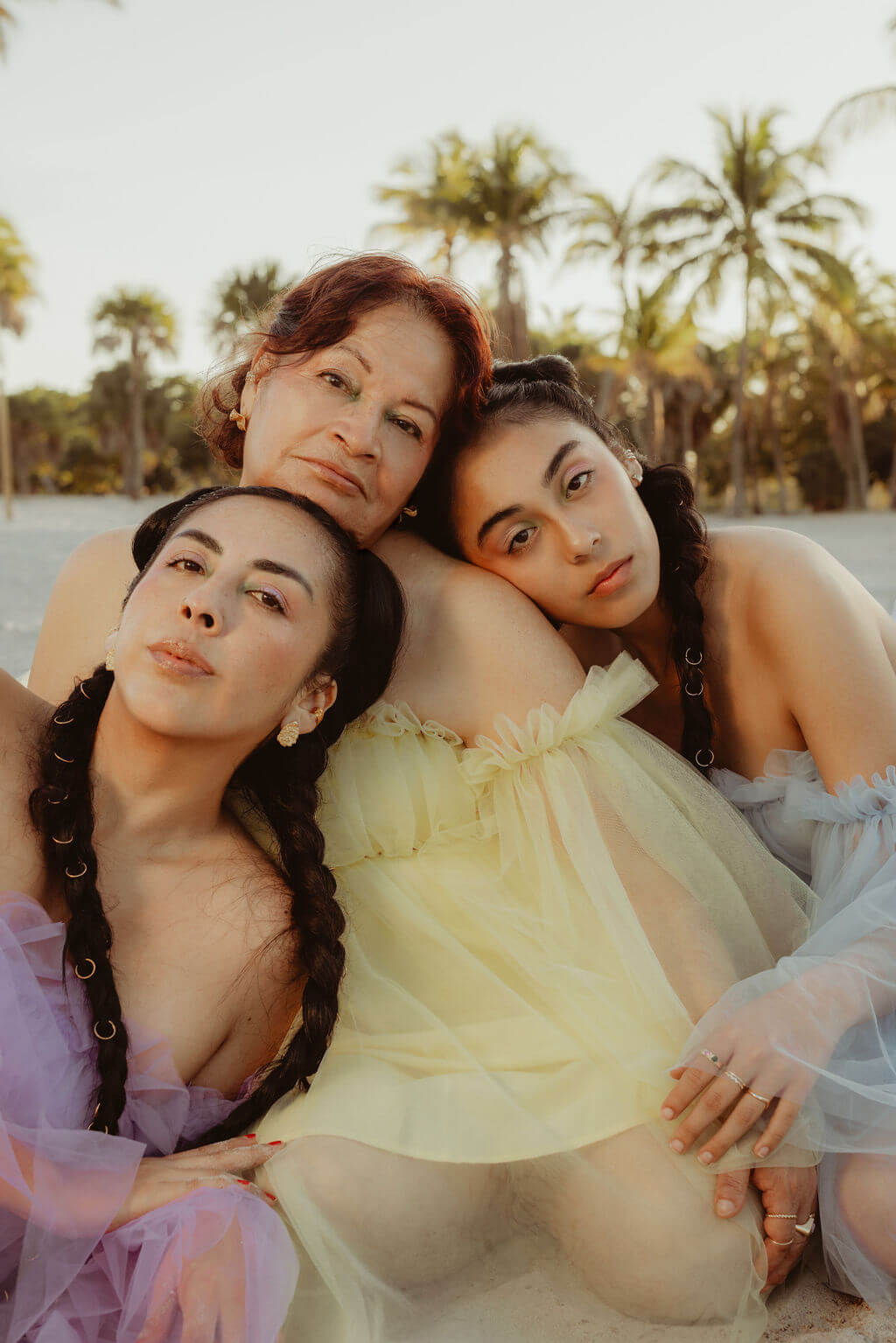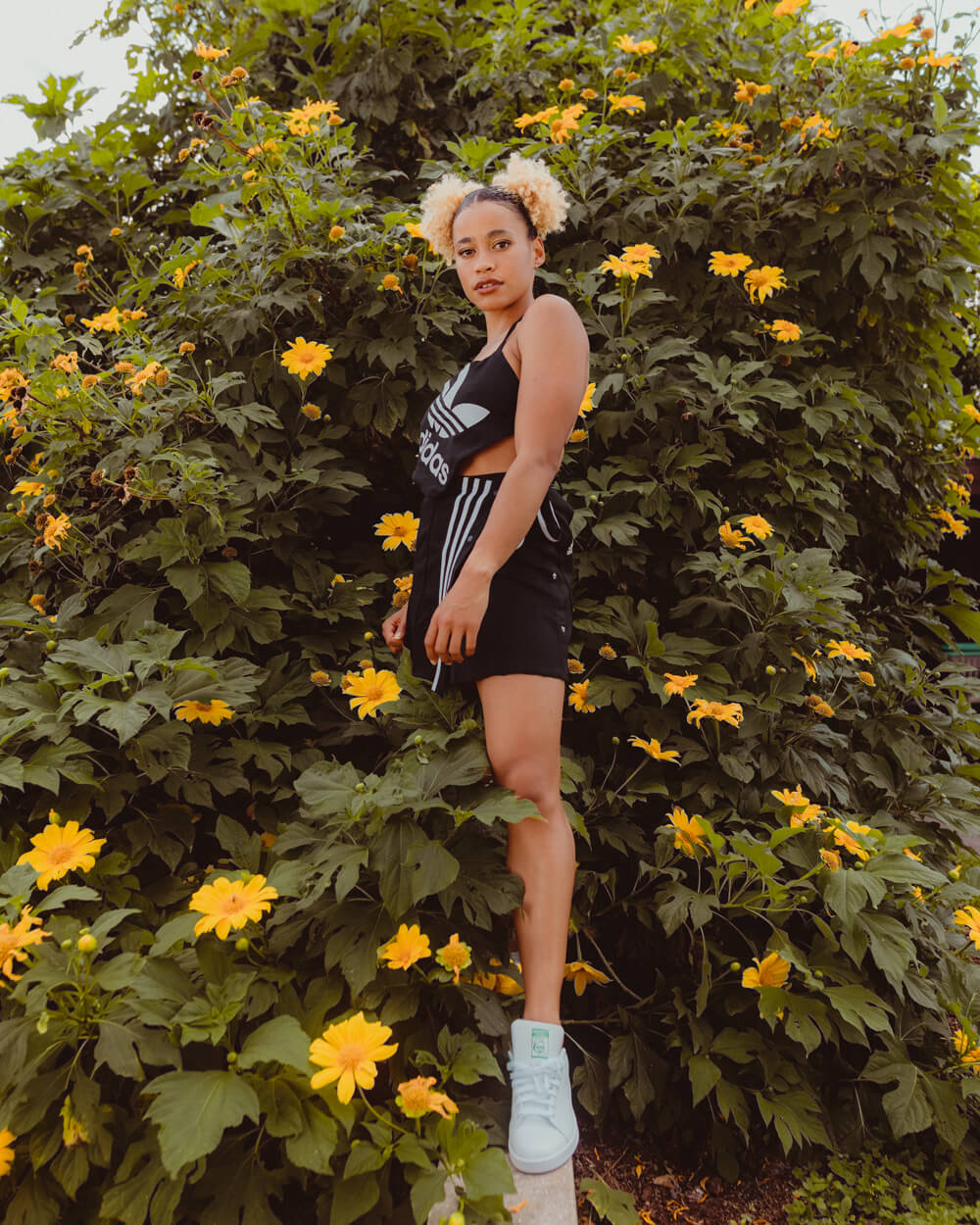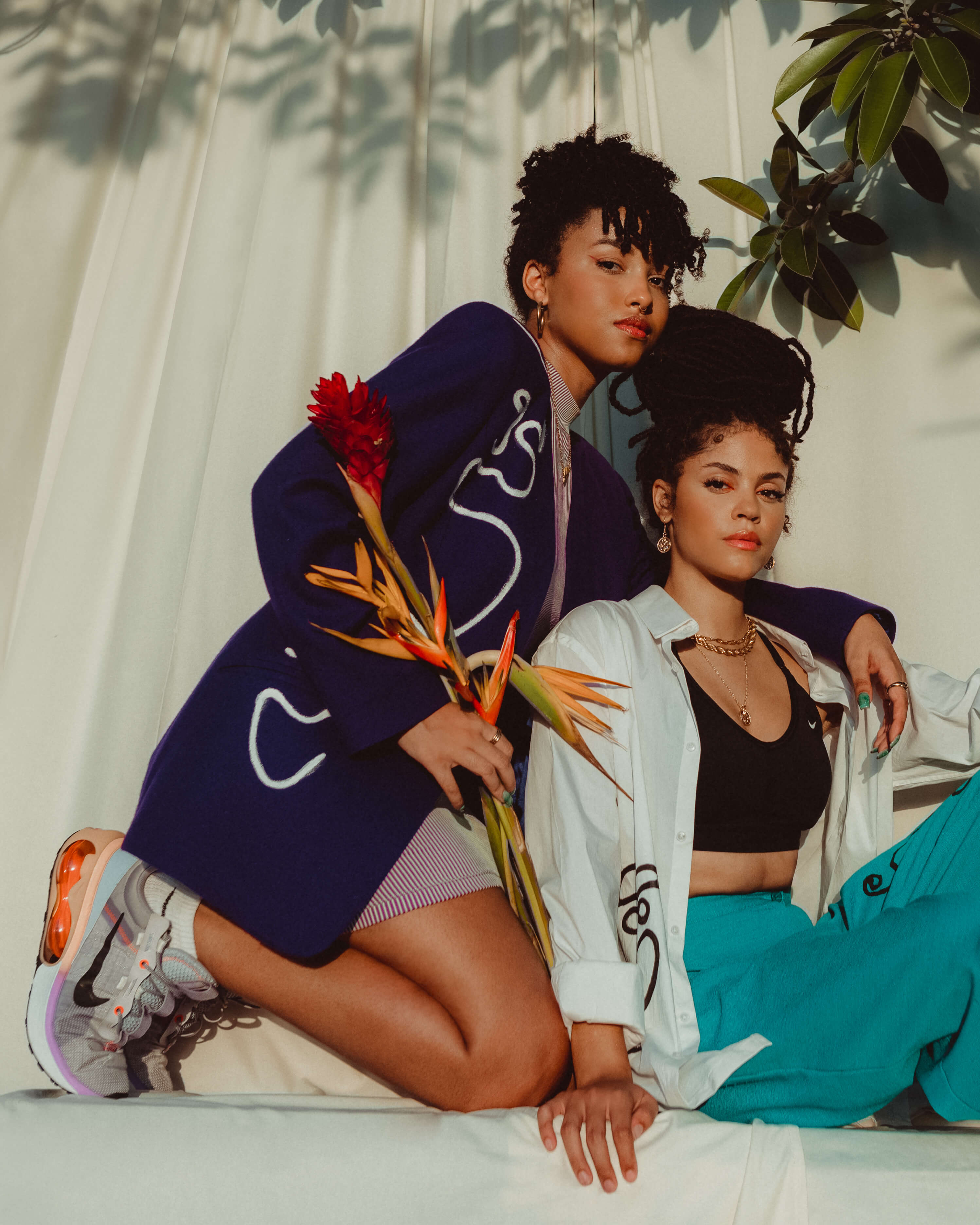I see art as an escape from reality. Life can be tough and there are situations you can’t change. But for me, art is a way to be more introspective – like being a therapist to myself through my photography, through art.
Based in Miami, Celia D. Luna is a visual artist who mainly works in fashion and portrait photography. The memories of a culturally vibrant childhood – filled with Andean folklore and traditions of rural Peru – can now be found in her work as inspiration. And having been raised by a strong single mother, celebration of women is at the very core of all of Celia’s work.
Read our conversation with Celia:

Self Portrait by Celia D. Luna
Which part of Peru did you you grow up in and what was it like?
I was born in Ayacucho, Peru which is in the Andes (mountains). I was born and raised by a single mother. She did a beautiful job of bringing me up. She used to work at a travel and tourism agency, so she would take me to all the tourist spots around the area. It was wonderful to experience all of that. I honestly had a very happy childhood. I had a lot of friends and back in the day, we used to actually play outside and ride the bike. So yes, it was a nice childhood.
And traveling with your mother was also your introduction to art, design and craft, right? Was there a particular moment that made you want to do something in the art and design space?
I think it was very organic. I have always admired the craftsmanship of people doing intricate designs – with clay, color, fabric, yarn etc. But until I started taking photos on my own, I hadn’t realized that I was very attracted to color. My childhood was very colorful and whenever you see my photos from when I was a kid, you can notice the color. And this reflects in my work till now.
As a teenager, you relocated to Miami with your mother. How did that change happen?
My mother lost her job in Peru and she was just looking for a better life. We had a distant aunt who said why don’t you join us in the US? And my mother said, ‘okay, let’s do it!’ I think her options were moving to Brazil or Miami. She took some tests for a job in Brazil but didn’t make it, so Miami it was. The change was crazy. It was rough. I didn’t speak the language and came from this smaller town. So going to Miami, this super big city, was a tough transition.
What were some of your first impressions of Miami?
This is going to sound funny but I felt Miami kind of smelt like Doritos. That was my first impression! But in all seriousness, it was beautiful, fast, and big. Everything was new so it was exciting yet terrifying at the same time.
You studied at AI International University of Art and Design and pursued Graphic Design. After which you went on to work in Publication and Advertising. Could you share more about that period?
I’ve always been artistic, but I knew that wasn’t going to pay the bills, or at least I was raised with that mentality. So the closest thing that I could find was Graphic Design, which involved creativity but also paid the bills. I did that for a few years and it was nice. But then it got monotonous, and I kind of felt stuck. That’s when I went through a significant transition in my life. I was exploring myself and promised that I was going to be true to who I am. One of the things that I always loved was photography, and I decided to just go for it. I was dabbling with it for a year or two, like photographing people and taking it a little more seriously. So I decided to pursue it and that’s how it started.
I think creativity is the number one thing in my life, so it’s very important for me to cherish it. So I usually dedicate a few hours in the week to just have fun and not be judgmental. It could be anything really, not just photography. I just really let go and get lost in the moment. And, it’s very important to not judge it, because we do get a little critical sometimes.
Before you took it up as a profession, what were your photographs like?
I would take my camera everywhere, and it wasn’t even like a fancy camera. I would take it to friends’ gatherings, parties, etc. and just snap photos! It was beautiful and I enjoyed it very much. People around me genuinely thought I was a photographer. I just had a great time capturing those moments.
When you got into professional photography, was it difficult at first to figure out what kind of photographer you wanted to be? How did you find your way into this specific style that you have now?
It wasn’t an easy process. In the beginning, I just took photos of everything. But pretty early on, I knew I gravitated more towards people, capturing their face, body language, and all of it. For a while, I was into wedding photography too. What I liked the most about weddings was the fashion involved, the clothes people were wearing. There were moments where I would forget about the bride and groom and focus just on the clothes (laughs). Even then, I didn’t like white. I liked things which were more colorful, so I started to put that into practice and created photoshoots that I wanted to see.
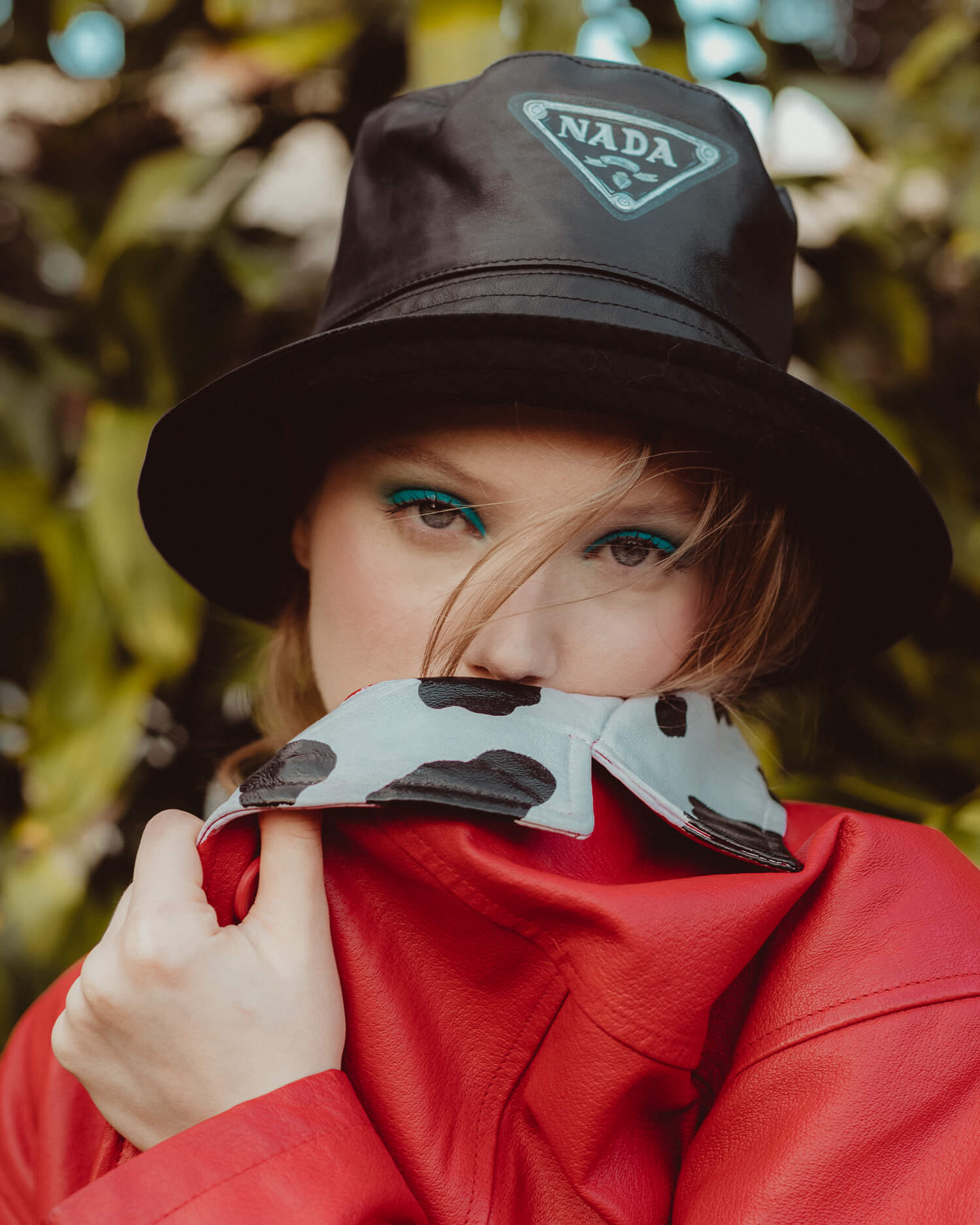
Panache
Two integral elements in your work are color and celebrating strong women which comes from having grown up with a single mom. I would love to know more about your relationship with your mother and how did it become a part of your work?
When I grew up with my mother, I always saw her as this very strong person you know. She was the boss of a travel agency, and in a male dominated country, that was really special. Although I didn’t realize this until we left the country and at that time, I did not appreciate or even notice it. But she had always been strong and wanted to do things. I did not grow up with my dad around so I never felt that male energy. I think that organically played into my work – featuring strong women. In Miami, women are portrayed a little more sexy, you know showing their bodies, but I wanted the total opposite. Every woman is so different and there is so much grace, and I wanted to combine that in a shoot. That was always my goal.
- Celia with her mother and daughter
Amongst all your personal projects, I want to particularly talk about ‘Cholitas Bravas’. How did it start?
The Cholitas were in my radar for a while. I was going to Peru to visit family which is also close to Bolivia, so this was my chance to go and plan it. It was like an act of faith, because I did not know these people. I had just sent them a message through Instagram.
I think what interested me was them pursuing these male dominated sports like hiking, skateboarding, and wrestling. The beautiful thing about them is that these women doing these extreme sports wearing their traditional garments, which is so special because they are all very proud of their roots. It is something that I really relate to. So I wanted to show the combination of these things. And I was very intrigued by them. I wanted to get to know them, understand their thought process, and know their whole story.
And what was that experience like?
So when we went to Peru, I asked my mother if she would like to go along with me for the shoot. She said of course, because she loves to travel. So I made her my assistant (laughs). We went to La Paz, Bolivia for the first shoot. I got there on a Sunday and I remember the wrestlers were performing the same day. I was communicating with someone who was helping me figure out the logistics of the shoot, but it wasn’t really working out. So I decided to just go and see them in this performance, and it turned out that I had 20 minutes to shoot the photos. It was nice to experience all of that and I was just happy the first shoot was done.
Next, I went to cover the hiking people. At first, I wanted to capture the older ladies that were hiking as they had more experience, but they were out of the country. So I got to do a shoot with the younger hikers. Then there were Cholitas Skaters who were in another city in Bolivia and we had to travel to meet them. We stayed there for a couple of days and I got to spend some quality time with them. There were so many of them and you could just feel the power of these women. They even asked me what I wanted from this shoot, which made me respect them even more. They were very cool. They offered to dress me by the end of the day but I was very tired and had to leave. Looking back now, I kind of regret that decision!
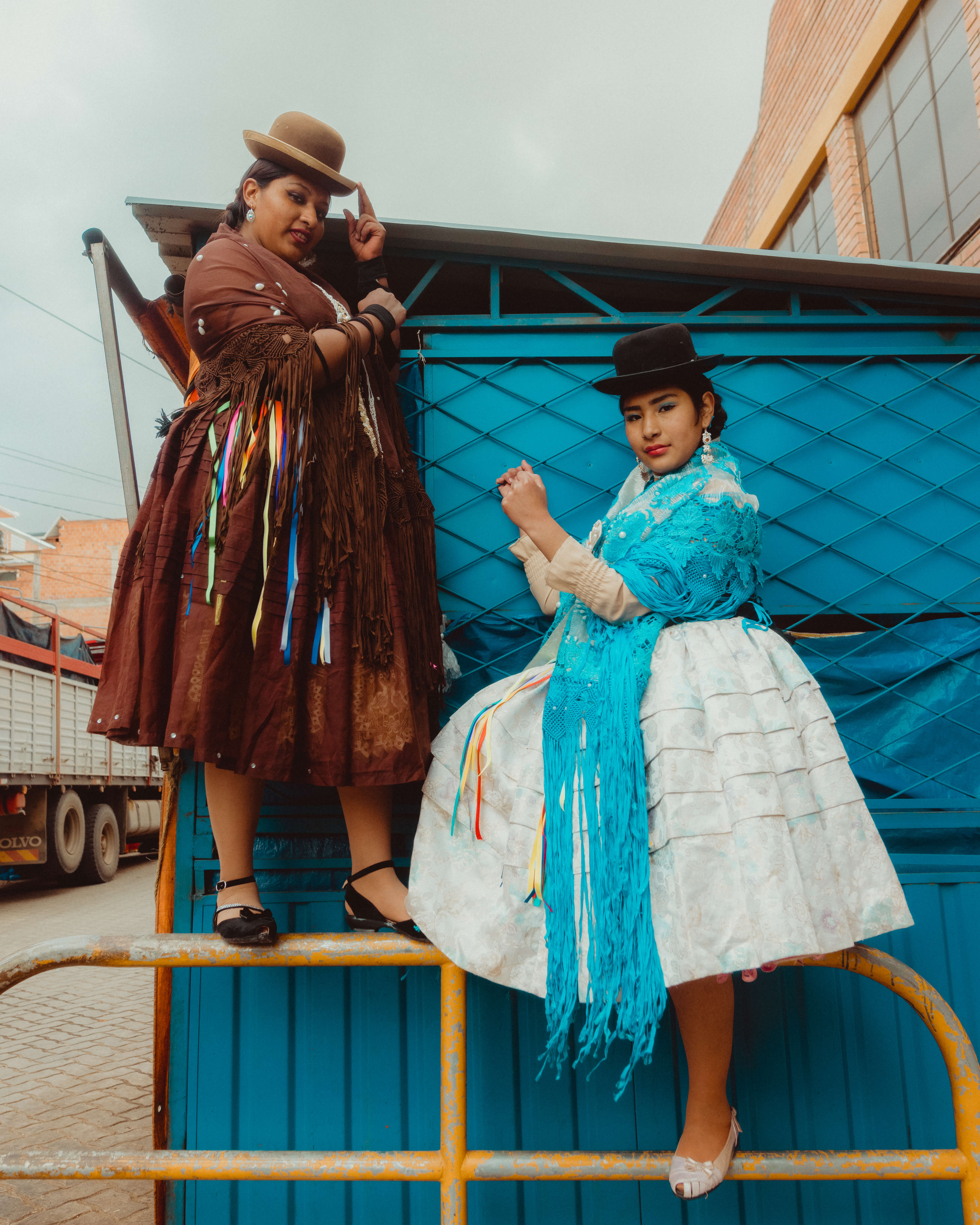
‘Luchadoras’ from the series Cholitas Bravas
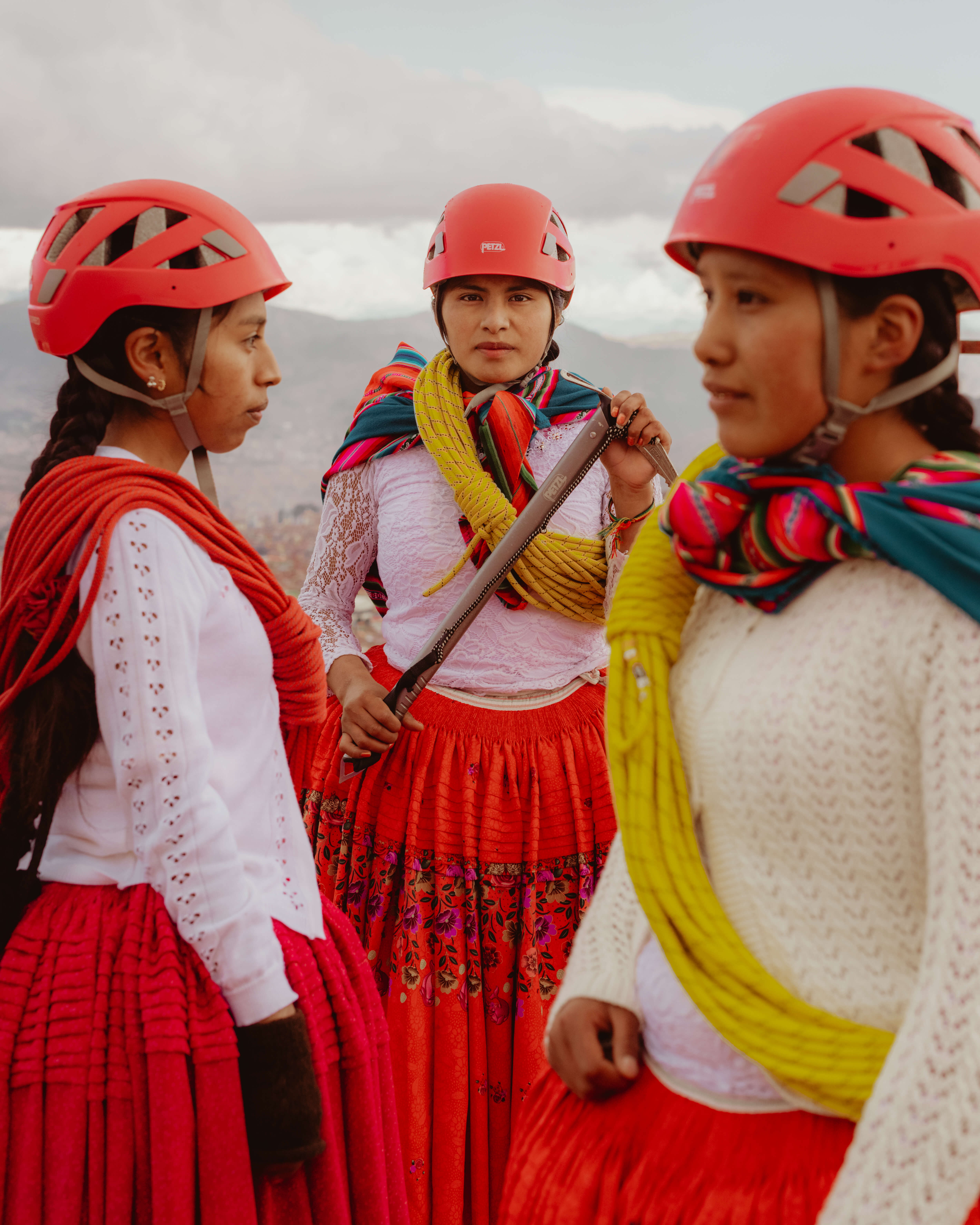
‘Escaladoras’ from the series Cholitas Bravas

‘Cholitas Skaters’ from the series Cholitas Bravas
What is your approach usually towards your subjects? How much do you interact or engage with them, or is it a very organic process?
I think it’s a bit of both. I leave a little room for everything when we do the actual shoot because sometimes people might be a bit shy or we could have unexpected weather when we are shooting outdoors etc. So I leave it to whatever happens during that time. But before the shoot is when I like to get to know them a lot, especially if it’s a commissioned portrait. I really try to understand them – have a questionnaire of sorts to know what they like. Because I am capturing them but it is through my lens that, so it’s important to ensure that comes through the photos.
Do your mother and your daughter have an opinion about your work? Do you take feedback from them?
Oh, 100%, all the time, especially when I select photos. My daughter has a very good judgment, so we often debate on which one works. She will let me know what she likes and usually I lean towards that, although I don’t want to accept it (laughs). But yes, she helps me with that all the time.
So what are some of the things that inspire you?
I think creativity is the number one thing in my life, so it’s very important for me to cherish it. So I usually dedicate a few hours in the week to just have fun and not be judgmental. It could be anything really, not just photography. I just really let go and get lost in the moment. And, it’s very important to not judge it, because we do get a little critical sometimes.
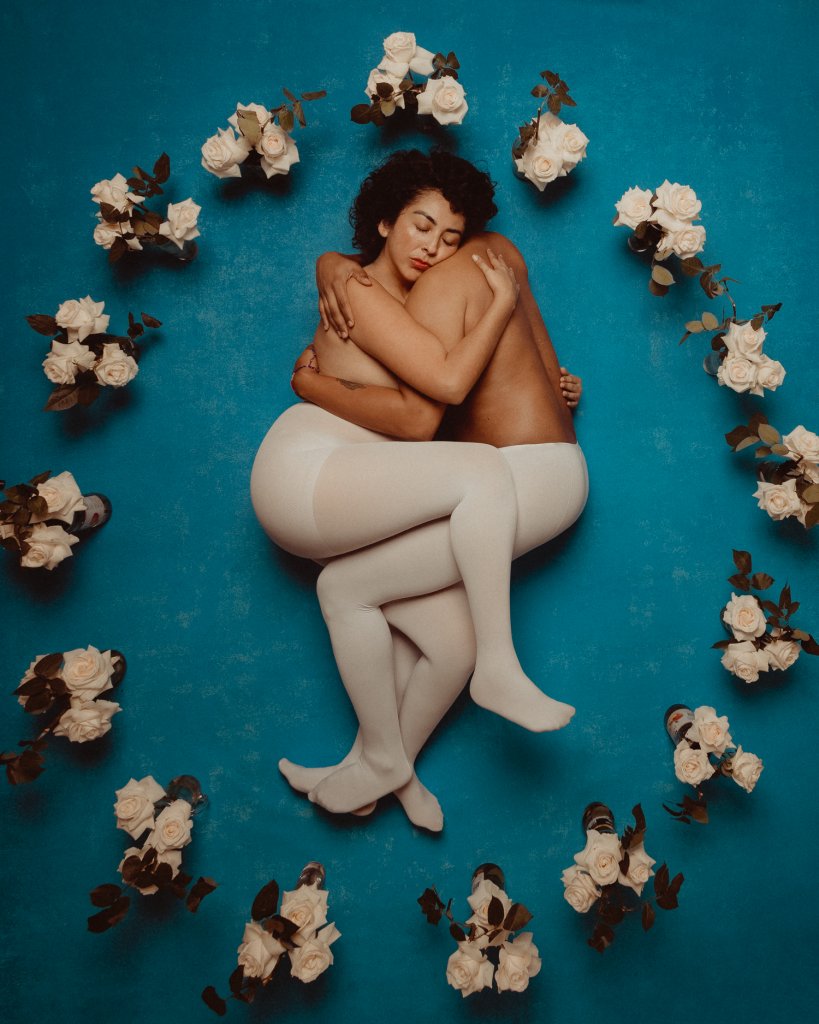
‘Intimacy’
I was reading your blog and your post about ‘Observer Walks’ really stuck with me.
Walking is so healing and nurturing, right? You can take the same walk everyday, but if you have the consciousness to observe the little things, you will keep finding new stuff. So you’re paying attention to the leaves, the little animals, the dirt on the floor. It’s an adventure and it opens your eyes to new things.
You have such rich cultural influences in your life. How does Miami as a city inspire you? Are there any ways it challenges you as well?
I love Miami very much. We also have color here but in a totally different sense. There is a lot of Caribbean and Cuban influence here. The multicultural aspect of it is exciting. There is also a large Latin community, so it’s interesting to learn about other cultures and how they express themselves. That’s actually what I’m working on right now. I want to explore the unity that happens in the Latin community. So yes, it is very inspiring. I am leaving Miami soon though for a bit. I’m going to miss this city.
Is that to work on a project?
Yes, I’m actually going to Peru to learn Gold Leafing. I have been meaning to do this for a while and eventually incorporate it in my work. There are these sheets of gold you apply to either a painting or a sculpture. You can either make space or add them in a certain way that is visually appealing. I think it was initiated in Spain but it was very influential in Mexico and Peru too. It’s something that I have always gravitated towards. So I am going to be learning this as part of an Art Residency for three weeks. I also want to visit Mexico after and work on a project about Cumbia music. This type of music originated in Colombia, but its influence is all over Latin America and that’s the unity aspect I was telling you about.
Amazing! I also saw some work where you have used embroidery on photos. Using other material would give the photograph a completely different sensibility – transforming it from just being a photograph to a completely different kind of artwork. Is that something you have been working on or was it a one off thing?
No, I always wanted to use embroidery on my photographs. It was hard at first because I would look at the photo and did not want to change it. But like you said, it gave it another layer and it was nice. The process was difficult in the beginning, but working on it gave me clarity on how to go about it. I’m still processing, researching and playing with it, you know. I want to incorporate both embroidery and gold leafing in my work. 
Do you believe in art for art’s sake or do you think art can bring about tangible change?
I see art as an escape from reality. Life can be tough and there are situations you can’t change. But for me, it’s a way to be a little more introspective, like a therapist to myself through my photography, through art. That’s what I also appreciate about other artists, to get into their brain and understand what they’re thinking. It’s also about perspective right? Like they create something but you have another perspective about it. So it takes you away from reality and that’s the best part about it.
Are there any changes that you are or would like to see in your own work?
I want to see even more diversity in my photos. The lack of diversity, especially in the fashion industry, is what bothers me a lot. But it’s changing and it’s beautiful, so I want to be conscious of that. I want to be more inclusive. I also love nature, so having nature filled photos is very important to me. I have done some projects that talk about being ecologically friendly.
- Photo from the Adidas Beginners Guide Shoot
- Photo from the Nike PR Shoot
Do you have any kind of advice for photographers who are just starting out?
My main advice would be to never lose playfulness. Take a lot of photos, but always follow what your heart is telling you, not what people tell or somebody else’s vision. But explore how you can implement your ‘sauce’. I call it my sauce. Like, what is it that could make it different, so that it’s more you. So having fun with it is very important, because it’s going to fulfill your desire and help you create more.
Photography is not just about taking photos obviously. There’s so much work that goes before and after that. So apart from taking the photographs, is there any part of the process that interests you?
I love the planning part of it – figuring out the backdrop and the context for the project is extremely exciting. Believe it or not, the shooting part is the most challenging for me because a lot of unexpected things can happen. When there’s great energy, it’s beautiful and just flows, but sometimes you can’t predict that and you still have to find a way to make it work. So it’s a matter of learning to navigate those changes.
Do you enjoy editing the photographs and doing the final selection?
It’s not my favorite thing, but I do enjoy putting some music on, getting into the zone, and working on the process. It’s the “me” time that I get.
What are some of the projects you’re currently working on?
I’m working on two projects. One is in Cusco, which is going to be very personal actually as my dad lives there. The series is going to be about the emotional aspects of that relationship and hopefully, I can take photos with him. I don’t have a relationship with him so it’d be nice to see how that whole process will unfold. I’m going to try combining Gold Leafing with that as well.
The second one is about Cumbia music. I’ve been a little obsessed with Mexican Cumbia. I don’t know why. I feel people are giving so much beautiful energy to this music and I want to capture the joy of it, you know. So that’s another project that I’m really excited about.
And what are some of the things on your mind right now?
I think 2023 will involve major changes for me. My daughter’s leaving for college so I’m going to be on my own. My mom lives with me part time and soon she’s going to Peru to build her house. It made me think of what’s next? What does Celia want? And you know, what Celia really wants is to be a nomad artist. So that’s what I’m going to pursue.
A lot of travel for you in the future then.
I think so. I want to travel a lot. And I think that’s when I create my best work. I just want to venture out and do those walks in different places.
That sounds very exciting.
Terrifying yet very exciting.
The interview was edited and proofread by Snehaa Sudarsan.

